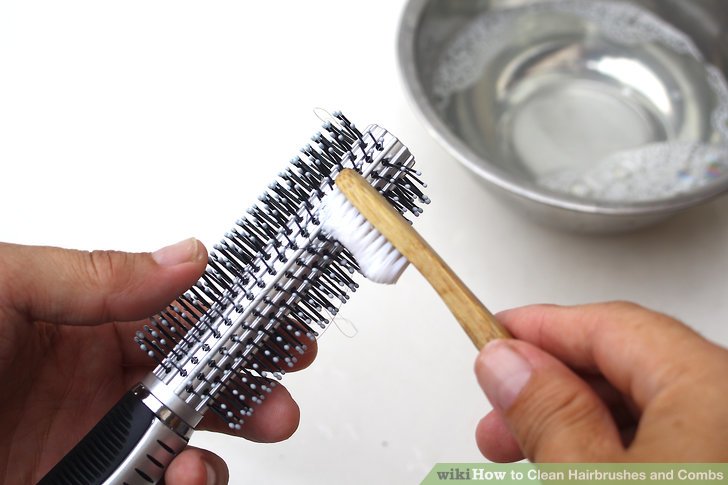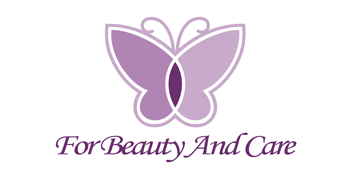| Disclosure: The links on this page are "Affiliate Links" and while these are shown at no costs to our viewers, they generate commissions for our website(s) |
The How-To's of Hairbrush Cleaning
There are so many things in your day-to-day life that require maintenance and cleaning, and while you’re tending to the bigger things—like laundry and a sink full of dishes—some of the smaller things can easily get overlooked. For some those forgotten items, the consequences of not cleaning them regularly can be very real—or very disgusting! An example is your hairbrush, an object that you likely use daily, then simply put back in its place without giving too much thought as to how clean it is.
But have you really thought about how gross an uncleaned hairbrush is?

Day after day and week after week, you’re potentially running this thing from somewhere near your scalp to the tips of your hair—right in the midst of any germs, oils, or dandruff that are in your hair. Worse, hairbrushes can be made to effectively sort through the strands of your hair to remove tangles. How much ability do you think that design would give in regard to encountering each and every one of those oils, germs, and dandruff?
As if the idea of “dust, conditioner, oil, germs, even dust mites being in your dirty hair brush” (Ess, n.d., para. 1)” isn’t shudder-worthy enough, you might also find that over time, so much lint gets in your brush that even if you remove hair after every use, the hideous little lint clumps are there on your bristles, proudly proclaiming how gross your brush is to anyone who spots it.
For all of this: Ew!
Luckily though, there are steps that can be taken to keep the lint under control and the oils regularly removed from the hairbrush so you don’t have to resort to treating brushes as disposable items! And if you feel like getting lazy on this cleaning commitment, just remind yourself that every day’s worth of hair and scalp remnants, lint, and dust might be waiting on those bristles to be reapplied to your hair with the brush’s very next use.

First of all, take daily care of your brush! This is a very simple step, but it’s one that’s easy to ignore. It’s so tempting to run the brush through your hair, then just set it aside so you can move on to other things, but investing a minute or two of your time to care for your brush will help keep it cleaner and less gross-looking between moments of major hairbrush scrubbing. For this daily care, simply use your hand to remove any stray hairs that are lingering on the brush, and run a clean comb through it for any additional ones that you can remove through the method (“How to Clean a Hairbrush,” n.d., #1 section). As I said, this might only take a minute or two, but it can keep you from shrinking in embarrassment when someone sees your hairbrush and the giant hair monster that has accumulated on it!
Secondly, work out a schedule as to when you’ll clean your brush, and do not veer from it! If you skip one cleaning session, postponing or avoiding the next one could feel so much easier. To keep your brush that much cleaner, you might think of cleaning it every week, but that’s just a recommendation. Remember though that if you space out your cleanings by a month or so, that’s at least a month’s worth of oil, dandruff, etc. that you could be returning to your hair whenever you brush.
Once that schedule is made and your cleaning date rolls around, you might be wondering how to truly scrub the hairbrush. You can begin, if you like, by removing the loose hair with your hand as was addressed in the daily care section of this post, but be sure that afterward you run some kind of pointed utensil in the columns and rows of the bristles in order to pull forward most of the hairs and residue that are at the bottom of the brush. After you have that hair and residue away from the bottom, use scissors to cut through whatever might be there for easy and quick removal. Throw away the hair, lint, etc. that you removed with the previous step, then rinse your hairbrush with water.
When the brush is wet, you can add shampoo to it—maybe even some baking soda for that extra level of clean (Maker, n.d.)—and lather it like you would your hands or hair. To give a deeper clean, you can use a new toothbrush to scrub the areas among the bristles that you can’t get to with your own hands. Afterward, rinse the brush off, and leave it to dry.
Once you’re finished, your hairbrush should look—and be—much cleaner, but if you find that you’ve let things go too far and it just isn’t worth fighting all of the lint and such to hold on to the hairbrush, it’s okay to toss that one and start with a new one! Just remember to keep the next brush cleaner so it doesn’t become an ongoing process that costs more money than the bit of shampoo that is necessary here and there to keep a current one clean!
There are also a number of professional hairbrush cleaning products on the market—like sprays and tools that are supposedly designed for the goal of bettering your brush—but it’s up to each person to decide if buying those kinds of products is the right choice. To me, it doesn’t seem to be. If shampoo is supposed to clean your hair, after all, it feels reasonable that shampoo is enough as well to clean the tool you use to manage your hair. Another thing to consider specifically with a leave-on spray or cleaning process is that if those chemicals are still on the brush when you use it again, those chemicals could be transferred onto your hair. For that reason, if you choose to use these kinds of products, do your research to see what chemicals will linger, and how those chemicals can impact your hair so you can keep it healthy!
If you follow these steps from start to finish, you might feel a little less insecure at the prospect of someone spotting your hairbrush and more confident that you’re not simply re-depositing last month’s germs right back where you got them from! Let’s keep those brushes clean!
References
Carroll, K. (2012, October 8). Is it possible to be too clean? Researchers say yes. NBC News . Retrieved from http://www.nbcnews.com/news/other/it-possible-be-too-clean-researchers-say-yes-f1C6345427 Ess, K. (n.d.). How to Properly Clean Your Hair Brush. The Beauty Department . Retrieved from http://thebeautydepartment.com/2012/06/how-to-properly-clean-your-hair-brush/ Fukushima, K. (2014, November 30). 5 Hidden Dangers of Hand Sanitizers. The Street . Retrieved from https://www.thestreet.com/story/12966410/5/5-hidden-dangers-of-hand-sanitizers.html “How to Clean a Hairbrush.” (n.d.). Real Simple . Retrieved from https://www.realsimple.com/beauty-fashion/hair/tools-techniques/clean-hairbrush Maker, M. (n.d.) How to Clean Your Hair Brushes. Clean My Space . Retrieved from http://cleanmyspace.com/how-to-clean-your-hairbrush/ Modern Mom Staff. (n.d.). How to Clean Hairbrush Lint . Modern Mom . Retrieved from https://www.modernmom.com/2cdf17e8-051f-11e2-9d62-404062497d7e.html









